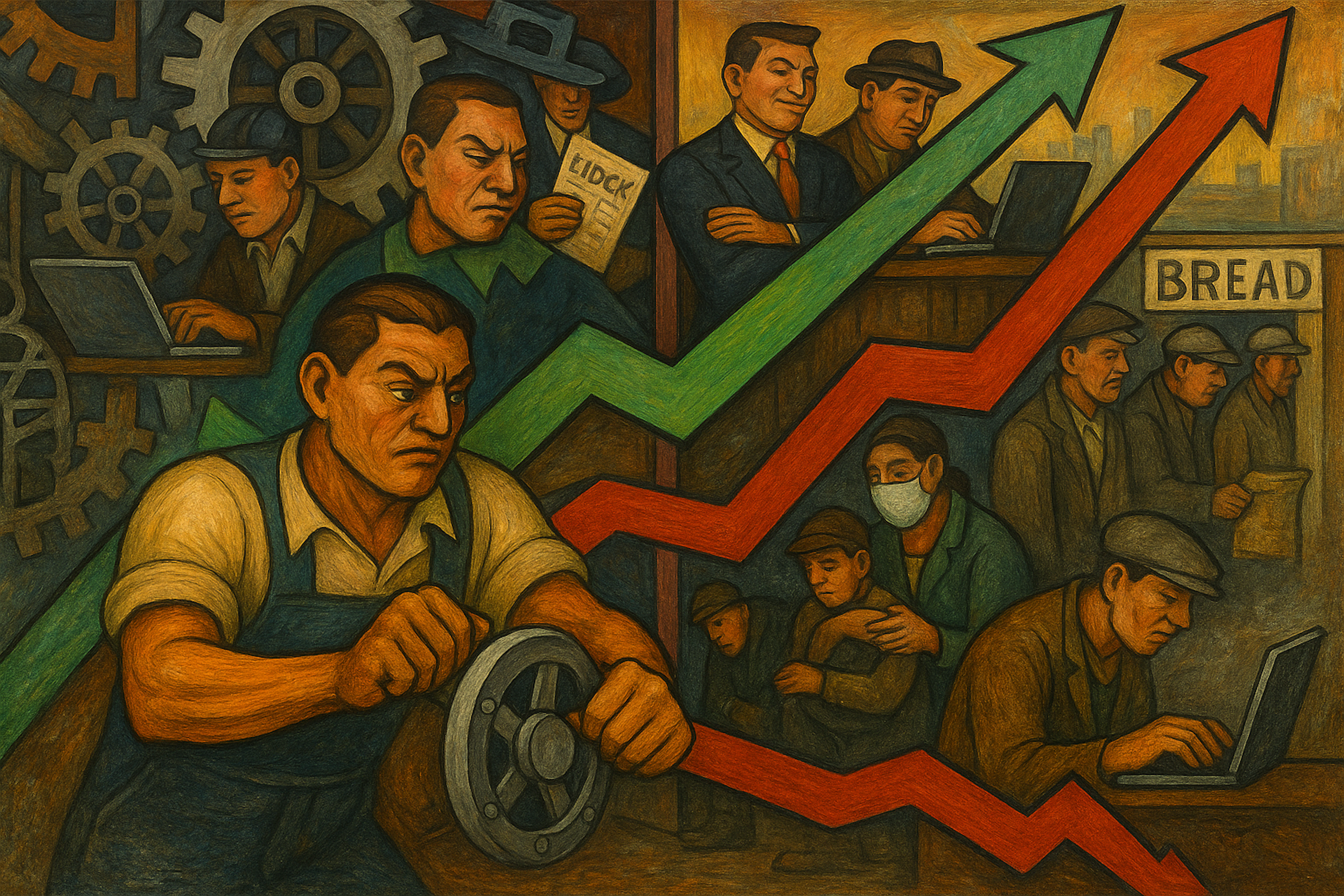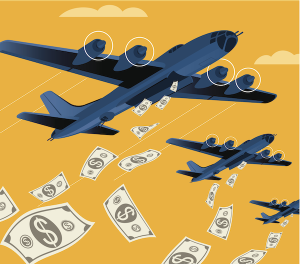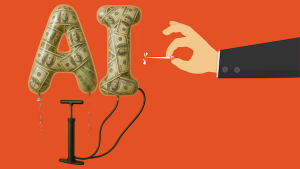The idea is finally catching on, but many still miss how deeply it’s driving inflation, masking wage losses, and complicating recovery.
Lately, you’ve probably seen headlines highlighting what some call a surprising truth: the richest Americans — who’ve enjoyed years of income and wealth growth — are the ones keeping the economy afloat with their spending. Meanwhile, most people struggle to keep up with rising costs.
For example, the New York Times recently announced: “Wealthy Americans Are Spending. People With Less Are Struggling.”
The story is gaining acceptance, and the latest data backs it up.
What’s noteworthy is that this dynamic wasn’t newly discovered.
Researchers Thomas Ferguson and Servaas Storm have been documenting and explaining this reality since early 2023, well before it went mainstream. Their first INET Working Paper on the topic appeared on January 3, 2023 and was later published in the International Journal of Political Economy. It showed that critics of the Biden stimulus were missing the mark and confusing its fading impact with a surge in spending from wealthy Americans, newly fueled by the Fed’s wealth-boosting policies.
Their second INET study, “Trump versus Biden: The Macroeconomics of the Second Coming” (May 2024), laid out the economic shifts driving these trends in more detail. They showed that between 2021 and 2023, the majority of Americans experienced shrinking real wages, while the ultra-wealthy enjoyed unprecedented wealth gains, and crucially, maintained strong spending. This spending by the wealthiest was enough to account for the surge in overall consumption, despite rising interest rates designed to cool the economy.
Meanwhile, inflation continued to hit key service sectors, and the Federal Reserve’s rate hikes struggled to curb it without risking a wider economic downturn.
As Ferguson and Storm explain:
“The richest 10% of U.S. households saw their wealth increase by $21.7 trillion during 2020-2023, notwithstanding sharp rises in interest rates. These wealth gains, which have no peacetime precedents, have enabled the richest American households to step up consumption, even if their real incomes were falling.”
Despite these clear findings, political and policy discussions leading into the 2024 election often overlooked the persistent decline in real wages for most Americans, instead focusing on broad economic recovery narratives and underestimating the continuing impact of inflation on everyday lives.
The work of Ferguson and Storm brings important insights to light about the post-pandemic economy from 2021 to 2023:
1. Wage and Wealth Divergence: While most Americans faced stagnant or falling real wages, the ultra-wealthy made extraordinary gains, reshaping consumption patterns and inflation in ways many mainstream economic narratives missed.
2. Beyond Traditional Inflation Stories: The common explanations for inflation — stimulus-driven demand or wage-price spirals — don’t tell the full story. Ferguson and Storm emphasize the outsized “wealth effect” from the richest 10% as a key driver of consumption and inflation during this period.
3. Recognizing a Split Economy: Treating the economy as a single unified entity misses the profound divide shaping inflation and policy responses. The growing inequality distorted inflation dynamics, complicating the Fed’s efforts and underscoring the need for more nuanced and targeted policy solutions.
In June 2024, Ferguson and Storm further cautioned that the Fed’s “higher for longer” interest rate strategy was a risky bet, pointing out that soaring wealth among the richest households fuels persistent inflation through their spending, making rate hikes less effective without risking an economic crash. They called for bolder fiscal and regulatory actions to address the root causes of inflation, rather than relying solely on monetary tightening.
Then, in September 2024, their follow-up study, “Good Policy or Good Luck? Why Inflation Fell Without a Recession,” explored how sustained spending by the ultra-rich helped temper the downturn, supporting demand even as inflation and interest rates rose. This “wealth effect” helped reduce inflation without triggering a deep recession, but it also highlighted the widening gap between the wealthy and everyone else.
Their work shows that the current economy displays a clear “K-shaped recovery” where the wealthy continue to pull ahead while most others fall behind. The rich keep spending and supporting growth, even as wages for most stall or even drop.
Ferguson and Storm’s work offers valuable insight into today’s economy and the challenges policymakers face in crafting a recovery that benefits everyone, not just a few at the top. With spending on AI driving the stock market to new highs, it also points up the vulnerability of the economy to a decline in the stock market.





